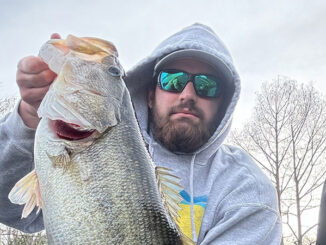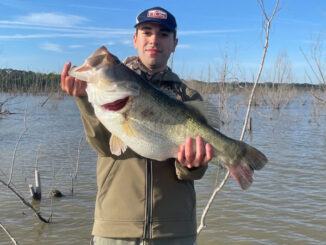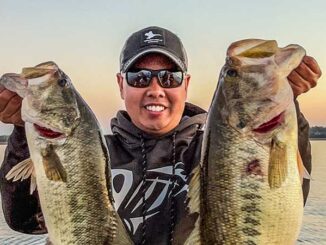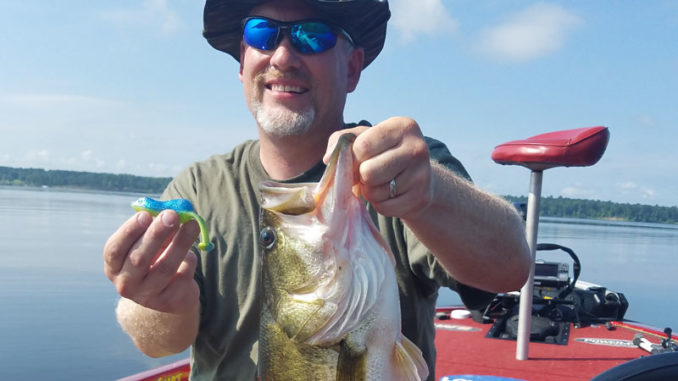
I remember one of those dog days of late summer three years ago on Toledo Bend, when a large school of ravenous bass, including 4-, 5- and 6-pounders, came up and stayed up for a few hours while I was fishing Housen Bay.
It was crazy, a good kind of crazy, bass fishing at its finest, and oh so much fun to pull bass out of that school gone mad. It can happen again any time in September on Toledo Bend — Indian Mounds, Six Mile Creek, Hurricane Creek, 1215, White Oak, anywhere on this border lake between Louisiana and Texas. It’s that time of year.
While schooling bass action these days pales in comparison to the lake’s heyday, it can be fast and furious enough to provide relief from otherwise challenging conditions on scorching, hot days. Schooling action has been fair to good in July, gets better and better in August and is at its peak in September.
Lower level requires care
That’s good to know considering that the lake will be lower than anyone, myself included, imagined it would be. It fell about 3 inches a day through July and, barring an extra-heavy rainfall or tropical weather system, will stay around 168, that pool stage, for the rest of the summer and early winter. The Sabine River Authority stated a few years back it won’t generate at the dam below 168. It drew the line at that level, which means we can expect it to be at 168 in September.
I advise boaters to be extra cautious, extra careful with the water level at or perhaps just under 168. The degree of difficulty of getting around this beautiful lake just ratcheted up a long way. Seventy-five percent of the wood in the lake is either right at or just below the surface at 168, so it is imperative to travel in the boat lanes.
How does that relate to schooling bass action? Sure, some schools still will be over 20- to 30-foot depths, but I continue to anticipate schools of bass smashing the surface by staying close to deep water but concentrating on feeder creeks, drains, going into 12-foot or so depths with flats nearby. Bass will converge on shad and push them up onto the flats.
Schooling bass numbers
Schooling bass are beginning to show up in numbers and are more widespread up and down the lake. There was a wad of them up, some big ones at that, providing some great bass-catching opportunities for an angler I know just the other day at 1215. And as I was idling this past week across White Oak, the shad were there, the bass were there and so were half-a-dozen bass boats. I kept going and let them have at it.
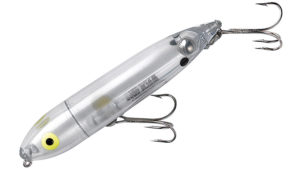
My go-to artificial lures any time a school of bass shows itself is any topwater bait that is clear. I’ve had so many good times walking a clear Zara Spook across a school of feeding bass anywhere on Toledo Bend. In fact, I’m catching schooling bass on it now, the most schooling action I’ve seen this year. Clear Rogues, clear Tiny Torpedos, clear Lucky 13s — you name the topwater, as long as it’s clear, it can be just as effective. Also, try chrome Rat-L-Traps and square-billed crankbaits, anything chrome or flashy.
And hold on. Some of those smashing hits send your heart into your throat, I’m telling you.
Don’t forget lily pads
There are other ways to catch bass and beat the late-summer doldrums on Toledo Bend.
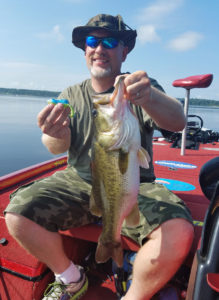
For one thing, don’t pass up the lily pad fields, even in 4- to 5-foot depths. They are full-diameter now, approximately 15 to 16 inches, and can carpet an area, proving plenty of shade. Whatever your favorite plastic frog — Spro, Ribbit, Top Toad or others — retrieve it around those pads. Again, hold on, and get the hawgs up and coming to you in a hurry, or the lily pad stems could rob you of the fish of a lifetime.
I sure do miss the summer days when we’d focus on punching heavy grass mats in deep water. I’d spend 12 to 13 hours punching grass. But much of the grass that made this lake famous for various grass-oriented patterns is gone. It really bothers me that it’s gone, inexplicably. But there are some grass beds to be found, not necessarily hydrilla and mostly milfoil, and they can be punched successfully in 7- to 8-foot depths in Housen Bay and Six Mile Creek, to name a few places.
Or, you can fish deep structure with drop shots, Carolina rigs, jigs and soft plastics.
Enjoy the transition month into fall. Be safe on the water.
If you want to catch bass in September, I’ve been guiding on this lake most of my life and you’re more than welcome in my boat.
